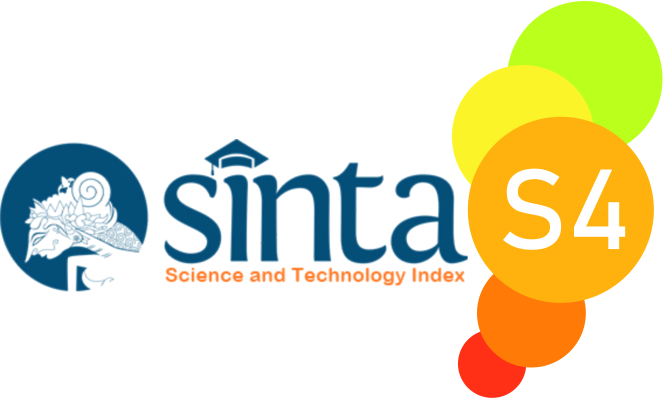The Relationship between The Use of Smartphone and Student Achievement in Class VIII
 ), Jalius Jalius(2),
), Jalius Jalius(2), (1) Universitas Negeri Padang
(2) Universitas Negeri Padang
 Corresponding Author
Corresponding Author
DOI : https://doi.org/10.24036/spektrumpls.v9i4.114639
Full Text:
 Language : en
Language : en
Abstract
This research is motivated by the low learning achievement of class VIII students at SMP Negeri 6 Lubuk Basung, this is forgotten because the use of smartphones in students is not good. This study aims to describe the use of smartphones in class VIII students, describe student achievement in class VIII, and see the relationship between smartphone use and student achievement in class VIII at SMP Negeri 6 Lubuk Basung. This type of research is quantitative with correlational descriptive technique. The population was all class VIII students and the sample was taken using a sampling technique, namely cluster random sampling. The data analysis technique uses the percentage formula and product moment correlation. The results showed that: the use of smartphones in students was classified as poor, student learning achievement was low, and there was a significant relationship between smartphone use and student achievement in class VIII. Furthermore, it is recommended for schools to apply strict rules regarding the use of smartphones in students so that they can affect student achievement. Hope for educators and parents to be able to monitor the use of smartphones on students to avoid negative things and decrease student achievement. For further researchers to see other variables related to student achievement.
References
Arikunto, S. (2016). Prosedur Penelitian: Suatu Pendekatan Praktik. Jakarta: Rineka Cipta.
Dimyati, & Mudjiono. (2015). Belajar dan Pembelajaran. Jakarta: Rineka Cipta.
Dinanti, N. P., & Jalius, J. (2021). Hubungan antara Minat Mengikuti Pelatihan dengan Hasil Belajar Warga Belajar Teknisi Handphone di Lembaga Kursus dan Pelatihan Multy Flash Kota Payakumbuh. SPEKTRUM: Jurnal Pendidikan Luar Sekolah, 9(2). https://doi.org/10.24036/spektrumpls.v9i1.110104
Djamarah, S. B. & A. Z. (2014). Stategi Belajar Mengajar. Jakarta: Rineka Cipta.
Gustria, N., & Wisroni, W. (2020). Hubungan Antara Pengelolaan Lingkungan Belajar dengan Hasil Belajar Peserta Tahfidz di TPQ-TPSQ Al-Hasib Beringin Nagari Lansat Kadap Kecamatan Rao Selatan Kabupaten Pasaman. SPEKTRUM: Jurnal Pendidikan Luar Sekolah, 8(3). Retrieved from ejournal.unp.ac.id/index.php/pnfi/article/download/109374/104011
Hamrat, N., Hidayat, D. R., & Sumantri, M. S. (2019). Dampak Stres Akademik dan Cyberloafing terhadap Kecanduan Smartphone. Jurnal EDUCATIO: Jurnal Pendidikan Indonesia, 5(1), 13. https://doi.org/10.29210/120192324
Hidayat, A. Ri., & Junianto, E. (2017). Pengaruh Gadget Terhadap Prestasi Siswa SMK Yayasan Islam Tasikmalaya. Jurnal Informatika, 4(2), 163–173. Retrieved from https://ejournal.bsi.ac.id/ejurnal/index.php/ji/article/download/2096/1667
Irmawita, I. (2018). Pengelolaan Program Pendidikan Nonformal untuk Kelompok Masyarakat Lanjut Usia. KOLOKIUM: Jurnal Pendidikan Luar Sekolah, 6(1), 1–8. https://doi.org/10.24036/kolokium-pls.v6i1.2
Manumpil, B. (2015). Hubungan Penggunaan Gadget dengan Tingkat Prestasi Siswa di SMA Negeri 9 Manado. Jurnal Keperawatan, 3(April), 1–6. Retrieved from https://ejournal.unsrat.ac.id/index.php/jkp/article/viewFile/7646/7211
Musariffah, N. A. (2018). Hubungan Penggunaan Smartphone dengan Minat Belajar Siswwa SMA Negeri 1 Gedangan Sidoarjo. Urnal Pendidikan Ekonomi (JUPE), 6(3), 133–137. Retrieved from https://ejournal.unesa.ac.id/index.php/jupe/article/download/25050/22952
Nurmalasari, & Wulandari, D. (2018). Pengaruh Penggunaan Gadget Terhadap Tingkat Prestasi. Ilmu Pengetahuan Dan Teknologi Komputer, 3(2), 1–8. Retrieved from ejournal.nusamandiri.ac.id/index.php/jitk/article/download/350/307
Pamungkas, A. H. (2020). Versi Pendidikan Nonformal dalam Pendidikan untuk Penanggulangan Pengangguran Muda Menurut Target SDG’s. Jurnal Halaqah, 2(1). Retrieved from http://ejournal.pamaaksara.org/index.php/hal/article/view/128
Ramadhani, I. R., & Fathurohman, I. (2020). Efek Penggunaan Smartphone Berkelanjutan pada Masa Pandemi Covid-19 terhadap Perilaku Anak. Jurnal Amal Pendidikan, 1(2), 96–105. Retrieved from http://ojs.uho.ac.id/index.php/japend/article/view/13293
Romi, R., & Jamaris, J. (2019). The Use of Learning Methods at Talago Biru Indonesian Pencak Silat College Agam Regency Branch. SPEKTRUM: Jurnal Pendidikan Luar Sekolah, 2(3), 373–384. https://doi.org/https://doi.org/10.24036/spektrumpls.v2i3.106337
Sari, Y. M., & Sunarti, V. (2020). Gambaran Perhatian Orang Tua pada Remaja yang Kecanduan Bermain Games Online di Kenagarian Kuranji Hilir Kecamatan Sungai Limau Kabupaten Padang Pariaman. Jurnal Halaqah, 2(2). Retrieved from http://ejournal.pamaaksara.org/index.php/hal/article/view/103
Slameto. (2013). Belajar dan Faktor-Faktor yang Mempengaruhinya. Jakarta: Rineka Cipta.
Suardi, M. (2015). Belajar dan Pembelajaran. Yogyakarta: Deepublish.
Undang-Undang No. 20 tahun 2003 Tentang Sistem Pendidikan Nasional. (2003). Jakarta: Departemen Pendidikan Nasional.
Utami, A. N., & Kurniawati, F. (2019). Dampak Negatif Adiksi Penggunaan Smartphone Terhadap Aspek-Aspek Akademik Personal Remaja. Perspektif Ilmu Pendidikan, 33(1), 1–14. https://doi.org/10.21009/pip.331.1
Wahyunii, Z. (2021). Hubungan antara Iklim Kelas dengan Hasil Belajar Peserta Pelatihan Teknik Kendaran Ringan di Balai Latihan Kerja (BLK) Padang. SPEKTRUM: Jurnal Pendidikan Luar Sekolah, 9(2).
 Article Metrics
Article Metrics
 Abstract Views : 277 times
Abstract Views : 277 times
 PDF Downloaded : 72 times
PDF Downloaded : 72 times
Refbacks
- There are currently no refbacks.

This work is licensed under a Creative Commons Attribution-NonCommercial 4.0 International License.


